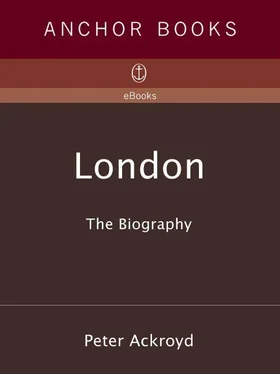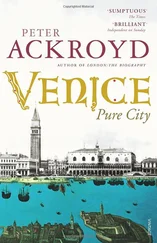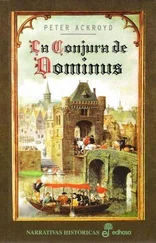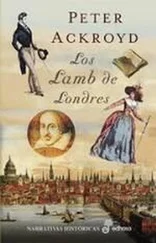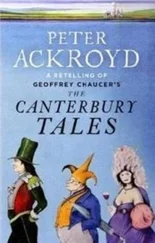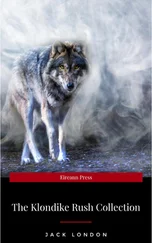Peter Ackroyd - London - The Biography
Здесь есть возможность читать онлайн «Peter Ackroyd - London - The Biography» весь текст электронной книги совершенно бесплатно (целиком полную версию без сокращений). В некоторых случаях можно слушать аудио, скачать через торрент в формате fb2 и присутствует краткое содержание. Год выпуска: 2000, ISBN: 2000, Жанр: Биографии и Мемуары, на английском языке. Описание произведения, (предисловие) а так же отзывы посетителей доступны на портале библиотеки ЛибКат.
- Название:London: The Biography
- Автор:
- Жанр:
- Год:2000
- ISBN:9781400075515
- Рейтинг книги:5 / 5. Голосов: 1
-
Избранное:Добавить в избранное
- Отзывы:
-
Ваша оценка:
- 100
- 1
- 2
- 3
- 4
- 5
London: The Biography: краткое содержание, описание и аннотация
Предлагаем к чтению аннотацию, описание, краткое содержание или предисловие (зависит от того, что написал сам автор книги «London: The Biography»). Если вы не нашли необходимую информацию о книге — напишите в комментариях, мы постараемся отыскать её.
London: The Biography — читать онлайн бесплатно полную книгу (весь текст) целиком
Ниже представлен текст книги, разбитый по страницам. Система сохранения места последней прочитанной страницы, позволяет с удобством читать онлайн бесплатно книгу «London: The Biography», без необходимости каждый раз заново искать на чём Вы остановились. Поставьте закладку, и сможете в любой момент перейти на страницу, на которой закончили чтение.
Интервал:
Закладка:
Yet, like the sea and the gallows, London refuses nobody. Those who venture upon its currents look for prosperity or fame, even if they often founder in its depths. Jonathan Swift depicted the jobbers of the Exchange as traders waiting for shipwrecks in order to strip the dead, while the commercial houses of the City often used a ship or boat as a weather-vane and as a sign of good fortune. Three of the most common emblems in urban cemeteries are the shell, the ship and the anchor.
The starlings of Trafalgar Square are also the starlings who nest in the cliff faces of northern Scotland. The pigeons of London are descended from the wild rock-doves who lived among the steep cliffs of the northern and western shores of this island. For them the buildings of the city are cliffs still, and the streets are the endless sea stretching beyond them. But the real confluence lies in this-that London, for so long the arbiter of trade and of the sea, should have upon its fabric the silent signature of the tides and waves.
And when the waters parted , the London earth was revealed. In 1877, in a characteristically grand example of Victorian engineering, a vast well was taken down 1,146 feet at the southern end of Tottenham Court Road. It travelled hundreds of millions of years, touching the primeval landscapes of this city site, and from its evidence we can list the layers beneath our feet from the Devonian to the Jurassic and the Cretaceous. Above these strata lie 650 feet of chalk, outcrops of which can be seen upon the Downs or the Chilterns as the rim of the London Basin, that shallow saucer-like declivity in which the city rests. On top of the chalk itself lies the thick London clay which is in turn covered by deposits of gravel and brick-earth. Here, then, is the making of the city in more than one sense; the clay and the chalk and the brick-earth have for almost two thousand years been employed to construct the houses and public buildings of London. It is almost as if the city raised itself from its primeval origin, creating a human settlement from the senseless material of past time.
This clay is burned and compressed into “London Stock,” the particular yellow-brown or red brick that has furnished the material of London housing. It truly represents the genius loci , and Christopher Wren suggested that “the earth around London, rightly managed, will yield as good brick as were the Roman bricks … and will endure, in our air, beyond any stone our island affords.” William Blake called the bricks of London “well-wrought affections” by which he meant that the turning of clay and chalk into the fabric of the streets was a civilising process which knit the city with its primeval past. The houses of the seventeenth century are made out of dust that drifted over the London region in a glacial era 25,000 years before.
The London clay can yield more tangible evidence, also: the skeletons of sharks (in the East End it was popularly believed that shark’s teeth might cure cramp), the skull of a wolf in Cheapside, and crocodiles in the clay of Islington. In 1682 Dryden recognised this now forgotten and invisible landscape of London:
Yet monsters from thy large increase we find
Engender’d on the Slyme thou leav’st behind.
Eight years later, in 1690, the remains of a mammoth were found beside what has since become King’s Cross.
London clay can by the alchemy of weather become mud, and in 1851 Charles Dickens noted that there was so “much mud in the streets … that it would not be wonderful to meet a Megalosaurus, forty feet long or so, waddling like an elephantine lizard up Holborn Hill.” In the 1930s Louis-Ferdinand Céline took the motor buses of Piccadilly Circus to be a “herd of mastodons” returning to the territory they had left behind. In Mother London Michael Moorcock’s late twentieth-century hero sees “monsters, by mud and giant ferns” while crossing the footbridge alongside the Hungerford railway bridge.
The mammoth of 1690 was only the first primeval relic to be discovered in the London region. Hippopotami and elephants lay beneath Trafalgar Square, lions at Charing Cross, and buffaloes beside St. Martin-in-the-Fields. A brown bear was discovered in north Woolwich, mackerel in the old brickfields of Holloway and sharks in Brentford. The wild animals of London include reindeer, giant beavers, hyenas and rhinoceri which once grazed by the swamps and lagoons of the Thames. And that landscape has not entirely faded. Within recent memory the mist from the ancient marshes of Westminster destroyed the frescoes of St. Stephen’s. It is still possible, beside the National Gallery, to detect the rise of ground between the middle and upper terraces of the Thames in the Pleistocene era.
This was not, even then, an unpeopled region. Within the bones of the King’s Cross mammoth were also found pieces of a flint hand-axe which can be dated to the Palaeolithic period. We can say with some certainty that for half a million years there has been in London a pattern of habitation and hunting if not of settlement. The first great fire of London was started, a quarter of a million years ago, in the forests south of the Thames. That river had by then taken its appointed course but not its later appearance; it was very broad, fed by many streams, occluded by forests, bordered by swamps and marshes.
The prehistory of London invites endless speculation and there is a certain pleasure to be derived from the prospect of human settlement in areas where, many thousands of years later, streets would be laid out and houses erected. There is no doubt that the region has been continually occupied for at least fifteen thousand years. A great gathering of flint tools, excavated in Southwark, is assumed to mark the remains of a Mesolithic manufactory; a hunting camp of the same period has been discovered upon Hampstead Heath; a pottery bowl from the Neolithic period was unearthed in Clapham. On these ancient sites have been found pits and post-holes, together with human remains and evidence of feasting. These early people drank a potion similar to mead or beer. Like their London descendants, they left vast quantities of rubbish everywhere. Like them, too, they met for the purposes of worship. For many thousands of years these ancient peoples treated the great river as a divine being to be placated and surrendered to its depths the bodies of their illustrious dead.
In the late Neolithic period there appeared, from the generally marshy soil on the northern bank of the Thames, twin hills covered by gravel and brick-earth, surrounded by sedge and willow. They were forty to fifty feet in height, and were divided by a valley through which flowed a stream. We know them as Cornhill and Ludgate Hill, with the now buried Walbrook running between. Thus emerged London.
The name is assumed to be of Celtic origin, awkward for those who believe that there was no human settlement here before the Romans built their city. Its actual meaning, however, is disputed. It might be derived from Llyndon , the town or stronghold (don) by the lake or stream (Llyn); but this owes more to medieval Welsh than ancient Celtic. Its provenance might be Laindon , “long hill,” or the Gaelic lunnd , “marsh.” One of the more intriguing speculations, given the reputation for violence which Londoners were later to acquire, is that the name is derived from the Celtic adjective londos meaning “fierce.”
There is a more speculative etymology which gives the honour of naming to King Lud, who is supposed to have reigned in the century of the Roman invasion. He laid out the city’s streets and rebuilt its walls. Upon his death he was buried beside the gate which bore his name, and the city became known as Kaerlud or Kaerlundein , “Lud’s City.” Those of sceptical cast of mind may be inclined to dismiss such narratives but the legends of a thousand years may contain profound and particular truths.
Читать дальшеИнтервал:
Закладка:
Похожие книги на «London: The Biography»
Представляем Вашему вниманию похожие книги на «London: The Biography» списком для выбора. Мы отобрали схожую по названию и смыслу литературу в надежде предоставить читателям больше вариантов отыскать новые, интересные, ещё непрочитанные произведения.
Обсуждение, отзывы о книге «London: The Biography» и просто собственные мнения читателей. Оставьте ваши комментарии, напишите, что Вы думаете о произведении, его смысле или главных героях. Укажите что конкретно понравилось, а что нет, и почему Вы так считаете.
